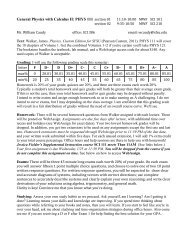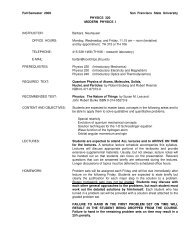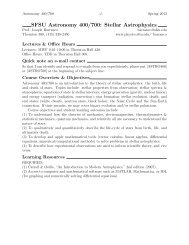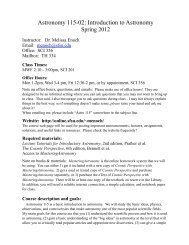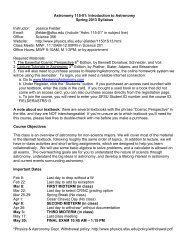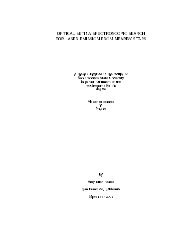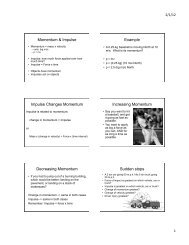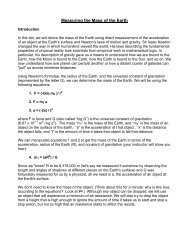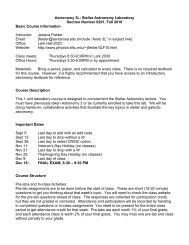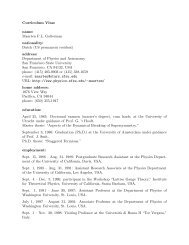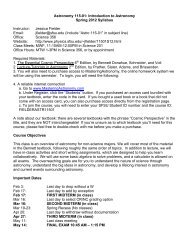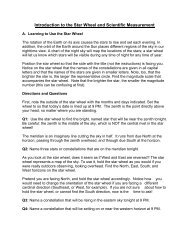Solutions for Chapter 2 Activity 6 Homework - SFSU Physics ...
Solutions for Chapter 2 Activity 6 Homework - SFSU Physics ...
Solutions for Chapter 2 Activity 6 Homework - SFSU Physics ...
You also want an ePaper? Increase the reach of your titles
YUMPU automatically turns print PDFs into web optimized ePapers that Google loves.
<strong>Chapter</strong> 2<br />
The nature of sideways <strong>for</strong>ces<br />
It is important to realize that the <strong>for</strong>ces that cause objects to change direction<br />
(moving in a circular path is just a continuous change in direction) are the<br />
same as the <strong>for</strong>ces that cause objects to speed up or slow down. For example,<br />
if your second tap in Experiment #1 had been in the same direction as the<br />
motion of the ball, then the ball would have sped up, rather than changed<br />
direction. If the tap had been in the opposite direction to the motion, it would<br />
have slowed down. The difference in effect was due to the direction in which<br />
the <strong>for</strong>ce was applied, relative to the motion, rather than anything different<br />
about the <strong>for</strong>ce itself.<br />
This is true of all <strong>for</strong>ces. For example, a hit from a hockey stick could be used<br />
to make a puck speed up, slow down and stop, or change direction,<br />
depending on how it is applied. Another example would be the <strong>for</strong>ce of<br />
gravity (which you will study in the next <strong>Chapter</strong>), which makes objects fall<br />
to the ground, but is also responsible <strong>for</strong> keeping the Moon in its (nearly)<br />
circular orbit around the Earth.<br />
In the summarizing questions you considered a <strong>for</strong>ce exerted by a string<br />
(which scientists call a ‘tension’ <strong>for</strong>ce) that made a stuffed toy<br />
continuously change direction, and so move in a circular path. Describe,<br />
and sketch, two other situations, one in which the tension <strong>for</strong>ce in a<br />
string is being used to make an object speed up, the other in which the<br />
same <strong>for</strong>ce is being used to slow an object down.<br />
You could pull on a string attached to a sled on an icy surface. That would make it<br />
start to move and speed up.<br />
Pulling<br />
<strong>for</strong>ce<br />
Once the sled is moving, you could also pull backwards on it with the string to make<br />
it slow and stop.<br />
Pulling<br />
<strong>for</strong>ce<br />
2-118



